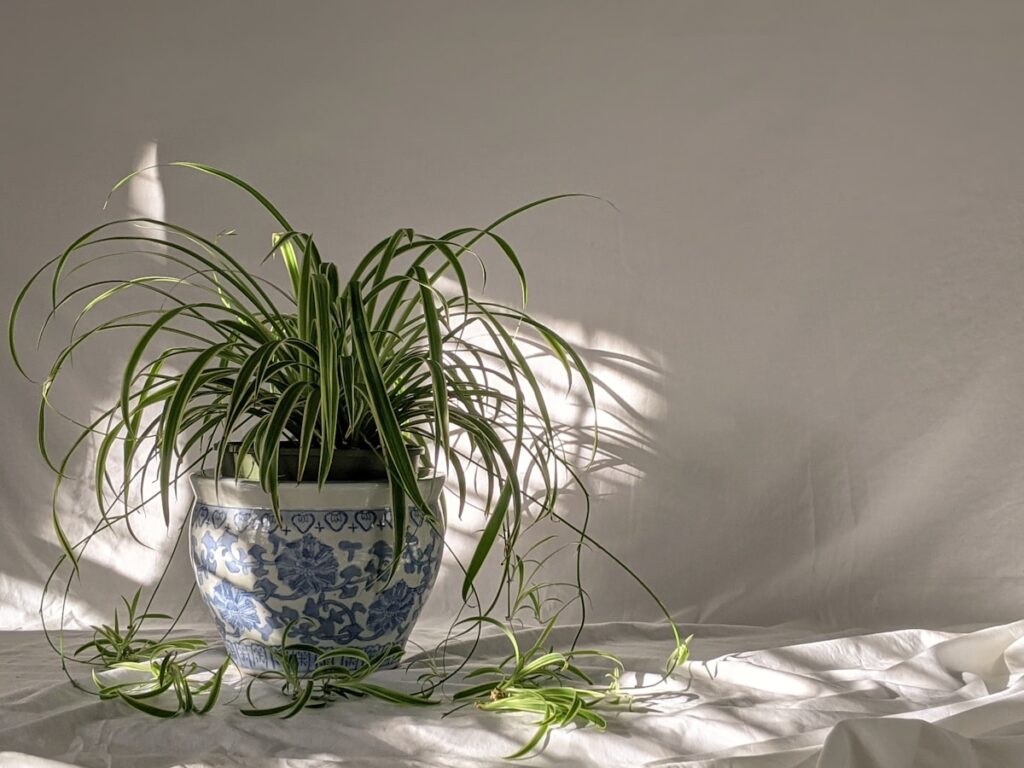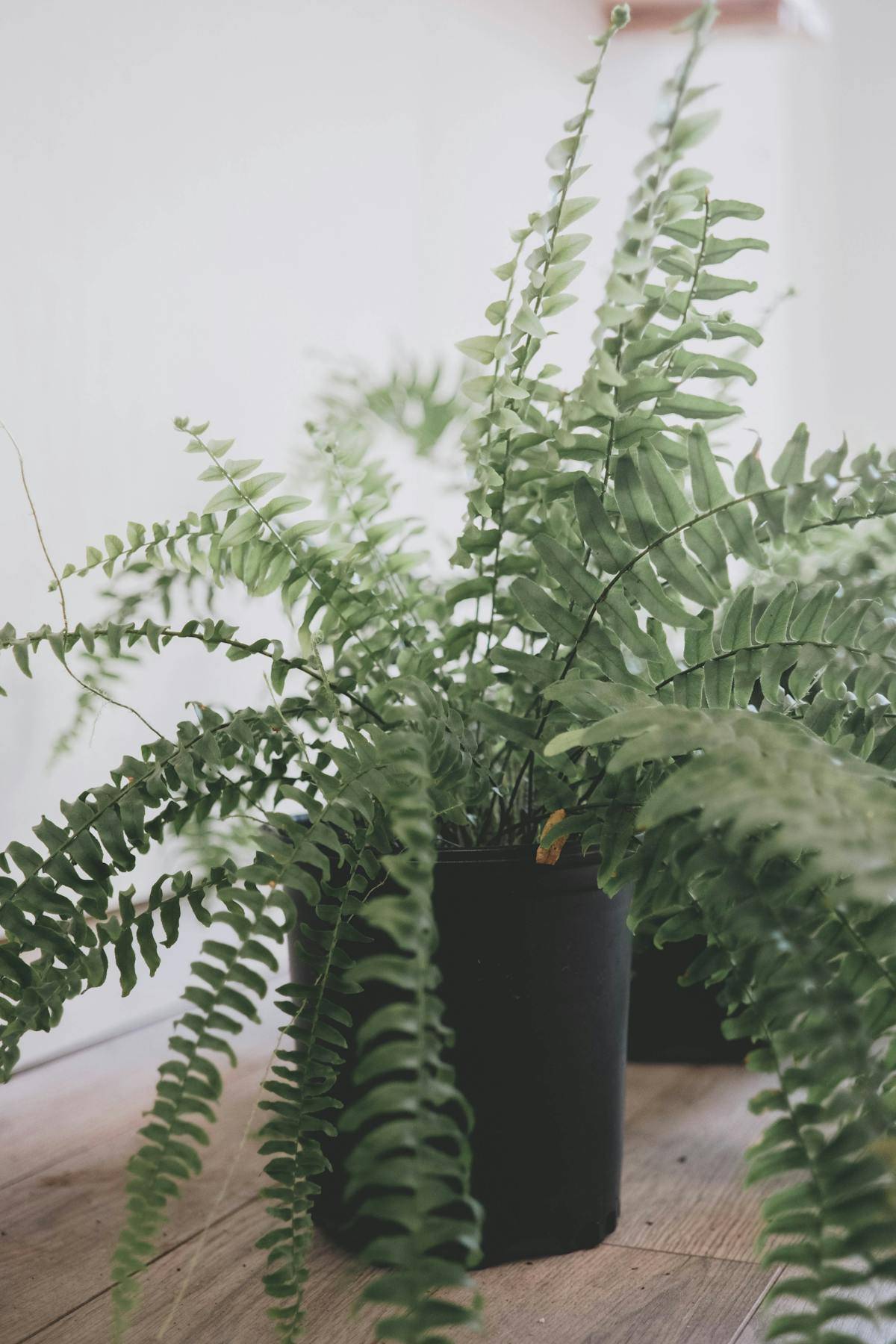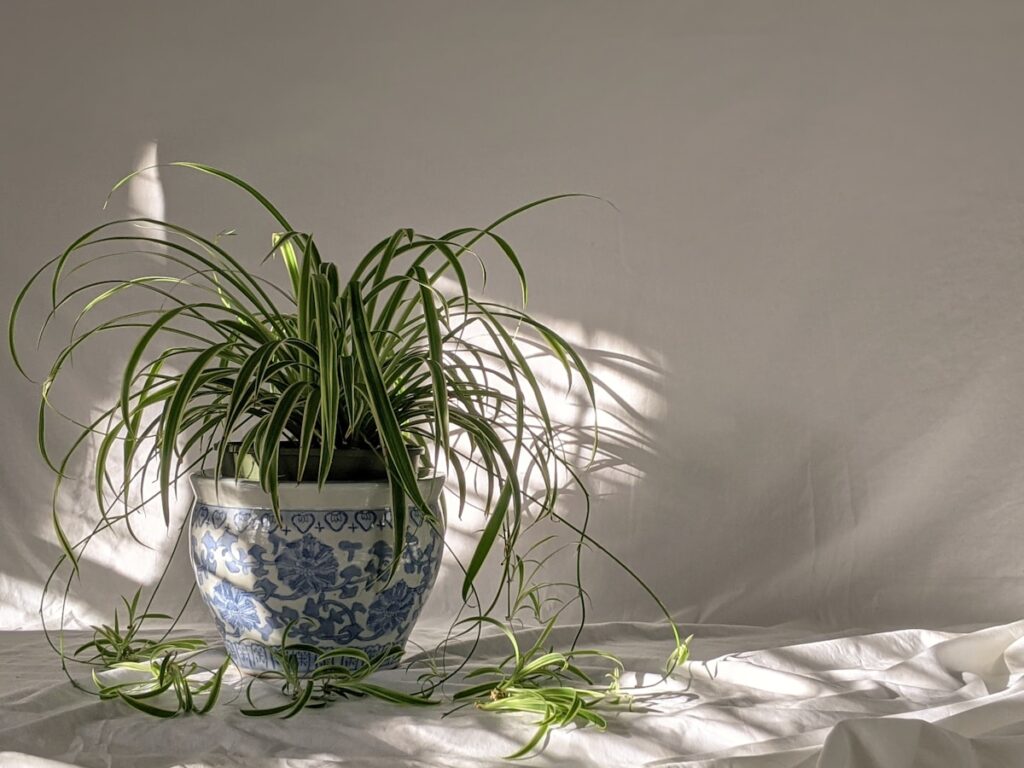These pet-safe indoor plants will let you enjoy the beauty of nature indoors without worrying about an emergency vet visit.
Creating a lush, green sanctuary in your home shouldn’t come with the constant worry of a pet emergency. If you’re a cat parent who loves indoor plants, you’ve probably faced this dilemma: many of the most popular houseplants—including lilies, pothos, and philodendrons—are actually toxic to our feline friends. Even small nibbles can lead to serious health issues like vomiting, difficulty swallowing, and, in severe cases, kidney failure.
But here’s the good news… you don’t have to choose between beautiful greenery and your pet’s safety. Since our curious cats often view houseplants as their personal salad bar, we’ve compiled this comprehensive guide to non-toxic houseplants that are safe for both cats and dogs.
Whether you’re a seasoned plant parent or just starting your indoor garden journey, these pet-friendly plants offer something for every home, lighting condition, and experience level.
Hardy & Beginner-Friendly Plants
Perfect for new plant parents or anyone who wants low-maintenance, cat-safe options.

1. Spider Plant — A Hardy and Cat Friendly Option
Spider Plants are a fantastic choice for anyone looking to add greenery to their home without putting their feline friends at risk. Not only is this popular houseplant non-toxic to cats, but they also thrive in a variety of conditions, making them an ideal pick for both seasoned plant lovers and beginners alike.
The Spider Plant stands out for its air-purifying abilities, removing toxins and creating a healthier environment for you and your cat. It’s very hardy, recovering easily from neglect.
Care Tips: Spider Plants thrive in indirect sunlight, making them suitable for bright spots without direct sunlight. Place them near windows with sheer curtains or in rooms with filtered sunlight. If the leaf tips turn brown, this may indicate that the plant is receiving too much direct light or that it needs more humidity.
Watering is simple: allow the top inch of soil to dry before watering. Overwatering can cause root rot, so ensure proper drainage and avoid allowing the roots to sit in water.
Pro Tip: Spider Plants produce “babies” or offshoots that can be easily propagated. Snip them off and place them in water or soil to grow new plants to use around your home or share. Consider hanging these in baskets where curious cats can admire but not easily reach them.

2. Cast Iron Plant — Tough, Stylish, and Pet-Safe
True to its name, the Cast Iron Plant is incredibly hardy and almost indestructible. It can tolerate low light, dry air, and irregular watering, making it ideal for forgetful plant owners or dimly lit spaces.
The broad, dark green leaves grow slowly but steadily, adding a sleek and sturdy aesthetic to any room. This plant also purifies the air and requires minimal maintenance.
The Cast Iron Plant is safe for cats, so you won’t need to worry about your pet’s safety as they explore your green space.

3. Ponytail Palm — The Playful, Low-Maintenance Succulent Your Home Needs
The Ponytail Palm is a unique and low-maintenance houseplant that adds a playful touch to your home. Despite its name, it’s not a true palm but a succulent that stores water in its bulbous trunk. This feature allows it to survive longer periods without watering, making it perfect for busy plant parents or beginners.
This plant thrives in bright, indirect light but can also tolerate some direct sunlight. Its slender, curly leaves cascade from the top, resembling a ponytail, which gives it a fun, whimsical look that cats find fascinating to watch but is safe if they decide to investigate.
Humidity Lovers
These indoor plants safe for cats thrive in higher moisture environments and add tropical vibes to your home.

4. Boston Fern — Air-Purifying, and Safe for Your Furry Friends
Boston Ferns bring a lush, feathery texture to your indoor greenery collection, making them a beautiful addition to homes with pets. They thrive best in humid environments with indirect light, making them ideal for bathrooms or kitchens that receive filtered sunlight. The rich green fronds not only add visual interest but also help improve air quality by trapping airborne pollutants.
Care Tips: Keeping Boston Ferns happy requires consistent moisture, so regular watering is necessary to keep their soil damp without becoming too soggy. They also appreciate regular misting to mimic their native humid environments, which helps prevent the fronds from drying out or turning brown.
Pet-Safe Placement: Positioning them in hanging baskets can keep them safely out of your cat’s reach while showcasing their graceful trailing fronds—a win-win for both aesthetics and peace of mind.

5. Calathea — Great for Low Light
Calathea plants are a wonderful choice for anyone looking to add a splash of color and pattern to their home. These beauties are renowned for their stunning foliage, which features intricate designs and vibrant hues ranging from deep greens to rich purples. Even better, they’re completely safe for your feline friends.
One of the standout features of Calatheas is their ability to thrive in low-light conditions. This makes them perfect for those spots in your home that don’t get a lot of direct sunlight. They prefer indirect light, so placing them near a north-facing window or in a room with filtered light works well.
Care Tips: When it comes to watering, Calatheas like to be kept consistently moist but not waterlogged. It’s best to water them when the top inch of soil feels dry to the touch. They’re a bit particular about water quality, so using distilled or rainwater can help prevent leaf browning from mineral buildup.
These plants also appreciate higher humidity levels, so misting their leaves regularly or using a humidifier can keep them happy.

6. Prayer Plant — Nature’s Colorful Dance That’s Safe for Cats
The Prayer Plant, closely related to Calathea, is a stunning addition to any home with its folding leaves and intricate, colorful patterns in shades of green, purple, and pink. The plant gets its name because its leaves fold upward at night as if in prayer, creating a calming, animated display that’s fascinating for cats to observe.
This plant thrives in indirect sunlight and enjoys consistent moisture. It prefers well-draining soil and high humidity, so occasional misting or a pebble tray can keep it healthy. A bathroom is a perfect environment for this pretty plant.
The Prayer Plant is safe for cats, making it a beautiful and worry-free choice for pet owners.
Palm Varieties
These pet-safe indoor plants bring tropical elegance to any space.

7. Areca Palm — Safe and Air-Purifying for Cats
The Areca Palm is a fantastic addition to any home looking to combine lush greenery with a pet-friendly environment. Known for its long, feathery fronds, the Areca Palm can bring a touch of the tropics to your indoor space. Plus, it’s completely safe for cats, so you won’t have to worry about your curious kitty nibbling on its leaves.
One of the standout features of the Areca Palm is its ability to purify the air. This plant can help remove toxins like formaldehyde and xylene from your indoor environment, creating a healthier space for both you and your pets.
Care Tips: When it comes to lighting, the Areca Palm thrives in bright, indirect light. It can tolerate a moderate amount of direct sun, but excessive exposure to bright light can scorch its leaves. Watering the Areca Palm can be a delicate balancing act—it prefers consistently moist soil, but it’s crucial not to let it sit in waterlogged conditions.

8. Parlor Palm — Elegant, Low-Maintenance, and Cat Safe
The Parlor Palm is a classic indoor plant known for its graceful, arching fronds and its ability to thrive in low-light conditions. This makes it an excellent choice for spaces with limited natural light, like offices or apartments. The Parlor Palm tolerates dry indoor air better than many other palms and requires minimal care, making it an ideal choice for beginners.
Its slow growth and elegant look add sophistication to any room, and it also acts as a natural air purifier, improving the quality of your indoor environment. Importantly for pet owners, the Parlor Palm is non-toxic to cats, so your feline friends can safely explore around it.
Care Tips: Watering should be done moderately—allow the top inch of soil to dry between waterings. Too much water can lead to root rot, so well-draining soil and pots with drainage holes are key.
Compact & Colorful Options
These smaller non-toxic houseplants pack big personality into small spaces.

9. Peperomia Obtusifolia — The Hardy, Glossy Green That’s Totally Cat-Safe
Peperomia Obtusifolia, commonly called the Baby Rubber Plant, is a hardy, compact houseplant known for its thick, glossy, succulent-like leaves. Its dense foliage adds a splash of deep green to shelves, tabletops, or plant stands. It’s very adaptable to different lighting conditions, from low to bright indirect light, making it suitable for many home environments.
This plant doesn’t need frequent watering due to its succulent leaves, which store water efficiently. It prefers the soil to dry out between waterings, so it’s a forgiving choice for those who might forget to water regularly.
Best of all, it’s completely non-toxic to cats, meaning you can confidently display it anywhere without worrying about your pets nibbling on it.

10. Money Tree — Prosperity and Pet Safety in One Plant
The Money Tree, also known as Pachira aquatica, is often associated with good fortune and prosperity. Its braided trunk and bright green leaves make it an attractive and meaningful houseplant. This plant is easy to care for and can adapt to various light conditions, though it prefers bright, indirect light.
The Money Tree prefers moist but well-drained soil, and it is essential to avoid overwatering to prevent root rot. It can tolerate occasional periods of dryness.
Non-toxic to cats, it’s a popular choice for homes looking to add a touch of greenery along with a bit of positive symbolism. Its moderate size makes it versatile for use on desks, shelves, or as a floor placement.

11. Friendship Plant — A Stylish, Cat-Friendly Plant for Any Space
The Friendship Plant, scientifically known as Pilea involucrata, is a charming houseplant that features uniquely textured, quilted leaves. These leaves typically display a deep, lush green color, complemented by eye-catching, contrasting veins that add layers of visual interest to any indoor setting.
This hardy plant thrives best in medium to low indirect light, making it an ideal choice for places that may not receive abundant sunlight. To ensure optimal growth, keep the soil evenly moist, but be cautious as overwatering can lead to issues.
One of the many appealing traits of the Friendship Plant is its safety for cats, allowing pet owners to enjoy its beauty without worrying about their furry friends. This plant grows compactly, making it an excellent decorative addition to desks, shelves, or other small spaces.
Flowering & Trailing Varieties
Add color and cascading beauty with these safe options for cats.
12. African Violet — Pet-Safe Blooms That Brighten Any Room
African Violets are beloved for their charming clusters of velvety purple, pink, or white flowers that bloom year-round under the right conditions. Compact and easy to care for, these plants thrive in bright, indirect light and need only moderate watering.
While they’re not technically a leafy plant, their floral display adds a splash of color to any indoor garden or on a shelf to brighten a room. African Violets are non-toxic to cats, making them a pet-safe option for those who want flowering plants in their home.
Placement Tip: Their compact size makes them perfect for windowsills or elevated surfaces where cats are less likely to disturb the delicate blooms.
13. Swedish Ivy — Fast-Growing Greenery That’s Safe for Your Cats
Swedish Ivy is a fast-growing, trailing plant with glossy, scalloped leaves that look great in hanging baskets or as a tabletop plant. It prefers moderate indirect light and consistent moisture, but is quite forgiving if you miss a watering.
It’s non-toxic to cats and grows quickly, making it a good choice to fill empty spots in your plant collection while keeping your pets safe. The trailing nature makes it perfect for hanging baskets—keeping it safely out of reach while creating beautiful cascading greenery.
14. Baby’s Tears — Delicate, Lush, and Pet-Friendly
Baby’s Tears (Soleirolia soleirolii) is a charming and delicate ground cover that is renowned for its tiny, vibrant green leaves. These leaves cluster together to create a lush, soft texture reminiscent of a verdant moss carpet, making it an ideal choice for adding a touch of nature’s beauty to indoor spaces.
This versatile plant thrives in bright, indirect light conditions and prefers consistent moisture in the soil. Moreover, this delightful plant is non-toxic to cats, making it safe for households with furry friends. Its enchanting foliage enhances terrariums and elevates the aesthetics of tabletops and various plant arrangements.
15. Partridge Berry — Glossy Green Trails with a Pop of Red
Partridge Berry (Mitchella repens) is a captivating, low-growing, trailing plant that brings both beauty and functionality to various settings. It features vibrant glossy green leaves and produces small, striking red berries that add a splash of color.
This hardy plant naturally thrives in shaded areas, making it an excellent choice for indoor environments that lack abundant sunlight. While not commonly found as a houseplant, it serves as a wonderful option for terrariums or as attractive ground cover in larger pots.
Safety Note: While Partridge Berry is safe for cats, monitor the consumption of its berries by pets, as ingestion in large amounts should be avoided to prevent potential digestive upset.

Important Cat and Plant Safety Guidelines
While these plants are all non-toxic to cats, remember that “pet-safe” doesn’t mean “good snack.” Even cat-friendly plants can cause mild stomach upset if your curious kitty decides to have a feast. Here are some practical tips to keep both your plants and pets happy:
Smart Placement Strategies:
- Use hanging baskets for trailing plants like Boston Ferns and Swedish Ivy
- Place smaller plants on high shelves or plant stands
- Consider decorative plant cages for floor plants
- Create a dedicated plant corner with barriers if needed
General Plant Safety:
- Always verify plant safety before bringing new greenery home
- Keep the ASPCA Pet Poison Control Center number handy: (888) 426-4435
- Watch for any unusual behavior after plant introduction
- Provide alternative grass or catnip for cats who love to nibble
Plants to Absolutely Avoid
While we’re focusing on safe options, it’s crucial to know which common houseplants pose serious risks to your feline friends:
Highly Toxic Plants:
- Lilies (all varieties): Can cause kidney failure even from small amounts
- Pothos (Devil’s Ivy): Causes oral irritation and difficulty swallowing
- Philodendron: Contains crystals that cause painful swelling
- Sago Palm: Extremely toxic and potentially fatal
- Dieffenbachia (Dumb Cane): Causes severe oral irritation
- Oleander: Can cause serious cardiac issues
- Azaleas and Rhododendrons: Can cause cardiovascular collapse
Creating Your Cat-Safe Indoor Garden
With these 15 beautiful, non-toxic houseplants, you can confidently create the lush, green sanctuary you’ve always wanted. From the virtually indestructible Cast Iron Plant to the colorful, prayer-like movements of the Calathea, there’s a perfect cat-safe option for every room, lighting condition, and experience level.
Remember, choosing pet-safe indoor plants means you can enjoy the beauty of greenery without the constant worry of a pet emergency. Your home can be both Instagram-worthy and pet-friendly—no compromises needed.
Ready to start your cat-safe plant collection? Check out the ASPCA’s complete list of pet-safe plants for even more options, and don’t forget to share your beautiful cat-safe plant setups with us in the comments below or tag us on social media!
Good luck, happy planting, and give your kitty a gentle pat from me! 🌿
